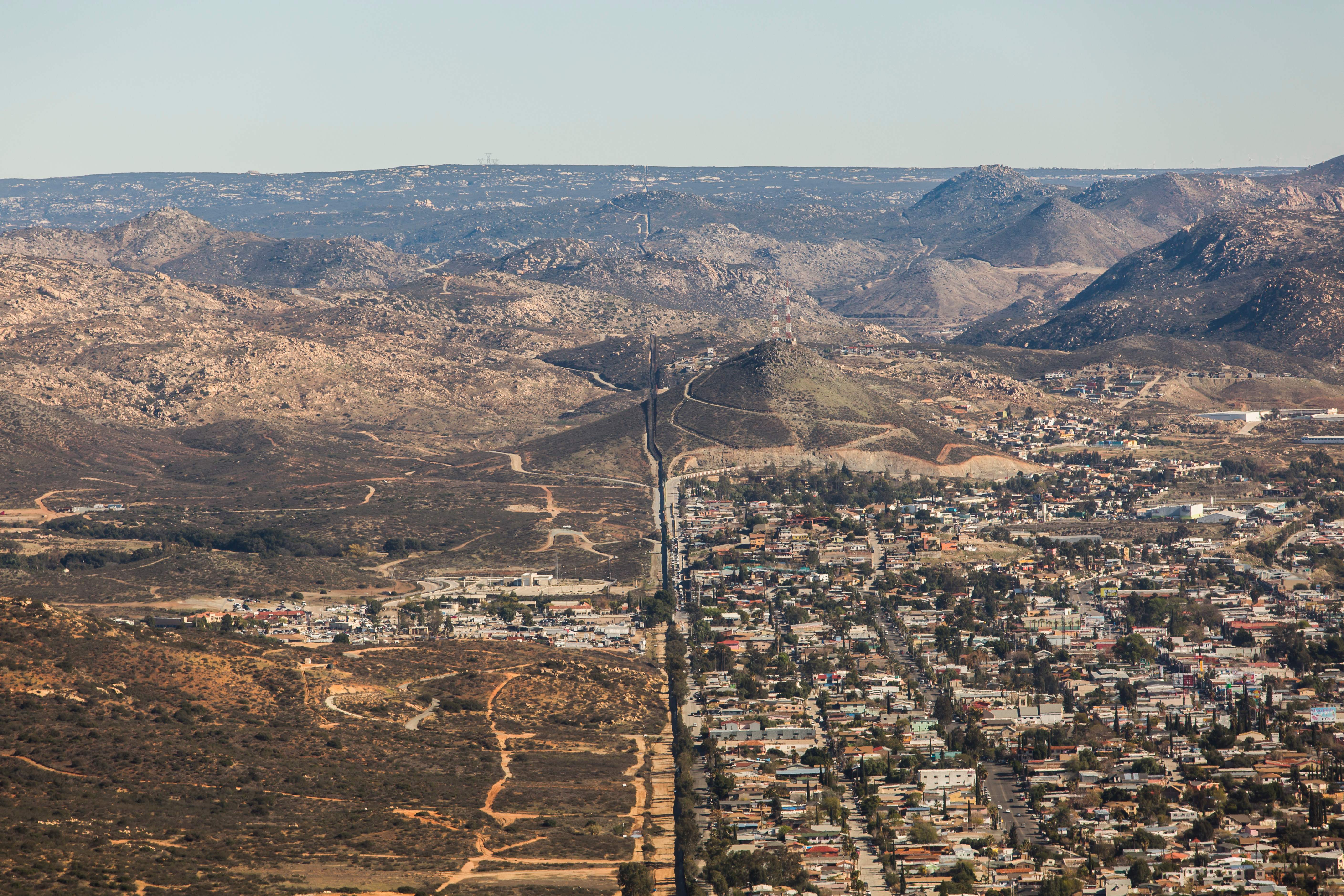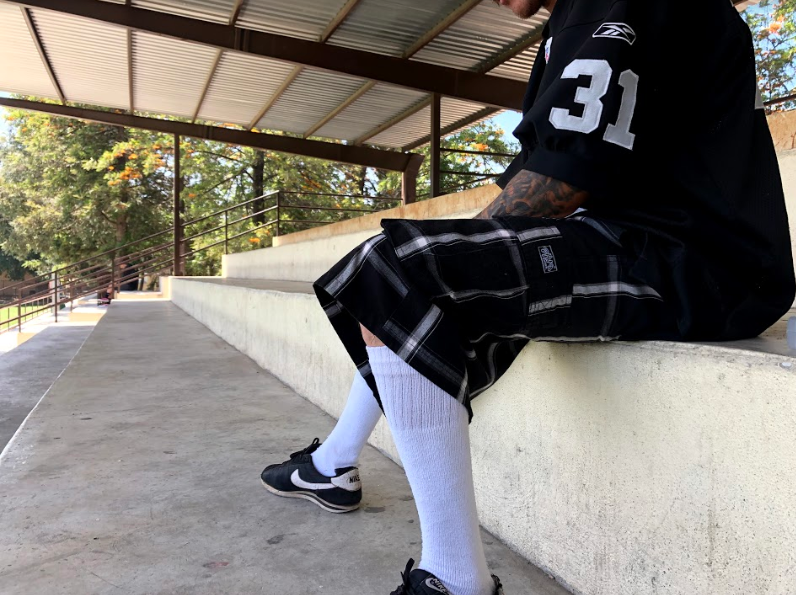Tired of Smuggling Humans Over the Border, Mexican Cartels Are Refocusing on Drugs
Credit to Author: Deborah Bonello| Date: Tue, 25 Jun 2019 17:42:07 +0000
Ishmael remembers the first time he smuggled people over the waist-high wall at the U.S.-Mexico border near the Mexican city of Tecate some three years ago.
Although hungover and tired, he managed to get his six pollos (literally “chickens,” but smuggler slang for “people”) across without getting caught. As a people smuggler locally, he was paid a mere $300 for every group he moved across.
But there is less and less work these days. People-smugglers like him are increasingly out of a job, because Mexican cartels here are shifting their focus from human to drug smuggling routes into the United States.
Born and bred in Tecate, Ishmael agreed to meet in a small park. We shifted our talking spot to the shady, graduated seating of a nearby sports field after he got detained and searched by the local police while he was waiting.
In a black and white baggy Raiders shirt, tight white socks pulled up to midcalf, shaved head, and tattoos, Ishmael is immediately recognizable as a cholo. The only person who bothers us here is a homeless guy investigating a nearby bin. Tecate feels calm, almost sleepy, compared to nearby Tijuana. The hot sun puts people in the shade.
The border with the United States is a two-minute drive from where we sit. The cost of being moved from here to your city of choice in the U.S. is around US$7,000 dollars, Ishmael said. But the full-scale smuggling services that were in demand just a few years ago are being used less and less. As the need for expensive smuggling services in this part of the region drops, so too does the tax revenue that criminal organizations make from it. This means drugs are taking precedence for the cartels in this part of the region.
The cartels moving some focus from human smuggling to drug smuggling may not seem like a seismic shift; cartels have always smuggled drugs. But the current trend is made significantly more concerning by the cartels’ growing production of the synthetic opioid fentanyl, which kills more Americans than any other drug.
The smuggling of people from Central American countries across Mexico up to this point is still a healthy criminal industry. But according to immigration experts, rather than needing expensive smuggling services that take them over the border and into cities to start new lives, migrants are increasingly paying a mere $300 each to be guided to the low wall or other parts of the border that are porous and then jump over and wait for CBP to pick them up and start processing their asylum claims.
This trend was confirmed by experts both in Mexico and the United States.
“Migrants are no longer seeking to evade capture but are instead looking to be apprehended so they can file a request for asylum, as is their right under U.S. law,” said Douglas S. Massey, co-director of the Mexican Migration Project at Princeton University.
Significant numbers of undocumented migrants continue to arrive at the international line between Mexico and the United States as large groups and families seek asylum from the violence and poverty back home in nations like El Salvador and Honduras. The quantity of people arriving at the international line is “unprecedented,” according to Randy Howe, CBP’s director of field operations.
“Over 84,000, or nearly 64 percent of our apprehensions [in May 2019] were family units primarily from the Northern Triangle countries such as El Salvador and Honduras,” said Brian Hastings, chief of Border Patrol Operations at the CBP. “The message continues to be, ‘Bring a child and you’ll be released [after being apprehended].’”
According to local experts, this shift—from migrants trying to avoid authorities as they enter the country, to simply trying to get into the US to ask for asylum—has changed the smuggling industry at former border hotspots.
“A lot of the polleros I know are unemployed because fewer migrants [who want to evade capture] are coming through Tijuana,” said Victor Clark Alfaro, an academic from San Diego State University and the founder and director of the Binational Center for Human Rights in Tijuana. “Tijuana isn’t the paradise for polleros that it once was.”
An hour’s drive from Tijuana, the small city of Tecate sits on the other side of the border of the US city of the same name. This part of the border is where the expanding New Generation Jalisco Cartel (CJNG) has territorial control and is moving chunks of its drug portfolio into the United States.

For these powerful crime syndicates, drugs are more valuable than people. But this is only one reason they are increasingly becoming a smuggling priority over humans. The other? With increased CBP presence on the border looking for migrants, it’s easier to just focus on drugs.
“You can’t work different products through the same line—there’s too much money at stake. There are routes for drugs and different routes for pollos,” said Ishmael. The cartels don’t want to risk getting precious drug shipments seized by the American authorities so are moving drugs through different parts of the border from where people are smuggled.
A kilogram of cocaine was worth an estimated US$28,000, wholesale, once it crossed the US-Mexico border. That gets bumped up to $165,000 at retail level on the US’s streets, according to figures from the United Nations Office On Drugs and Crime.
“Drug smuggling is so much more profitable [than human smuggling] and smuggling people brings all kinds of complications,” Massey said. “The cartels move huge quantities of drugs by high-tech means (tunnels, planes, boats, drones) and don’t want to be bothered with people, especially poor refugees from Central America.”
Stronger border enforcement and a longer wall were fundamental promises made by U.S. President Donald Trump during his campaign, and immigration and border control measures and politics have been a daily feature of his presidency. He claims that stronger border enforcement and increased vigilance will stop migrants and drugs entering the U.S., but it is the cartels, not Trump, who are the real sheriffs here. “They don’t care what Trump does or how they have to work—they get it done,” Ishmael said.
Ishmael speaks in a voice so low and discreet that I have to strain to hear him, and he looks around suspiciously. His phone rings every 10 minutes in the hour that we’re talking. “There are two types of organizations here in Tecate. One of them is dedicated to smuggling people and the other smuggles drugs. They’re separate and different but everything is connected,” he said.
“We all have the same boss,” he added. “Here in Tecate there is a plaza boss who lets us work but we have to pay him. My understanding is that it is Jalisco [New Generation Jalisco Cartel] who controls this plaza .”
The most recent figures from CBP on drug seizures—alongside use, price and purity data showing the UsS. has ample supplies of drugs such as cocaine, methamphetamine and fentanyl—reveal that despite claims by Trump that a tighter border would stop drugs, the flow of illicit substances through the U.S.-Mexico border has continued to rise steadily in recent years, with the exception of marijuana. (Legalization in numerous states in the U.S. has made it less of a cash cow for the cartels in Mexico.) This year looks set to match, if not surpass, seizures from past years.
Both CBP and the US Drug Enforcement Administration (DEA) maintain that the vast majority of drugs entering the United States come through its official ports of entry, not the unmanned border, and their seizure figures reflect this. This year, only 8 percent of fentanyl seizures have been made between the official ports of entry, and only 12 percent of heroin seizures. Seizures represent, very roughly, around 10 percent of what is actually getting through, according to Mike Vigil, a former chief of International Operations at the DEA who spent nearly two decades working Mexico, as well as other law enforcement experts. If seizures are rising, so too is the amount of drugs getting through.
So why does Trump continue to insist stronger border enforcement and a longer wall will stop an “invasion of drugs and criminals”? “Because improving ports-of-entry detection just isn’t as sexy as more Border Patrol agents and fences,” said Adam Isacson, director for defense oversight at the Washington Office for Latin America (WOLA), a think tank.
“The ports of entry are such a mess. They’re badly understaffed and they have billions of dollars in unmet infrastructure needs,” said Isacson. CBP’s Howe said last week that the agency’s facilities and resources “are beyond breaking point,” due to the demands generated by surging migrant arrivals.

And things are going to get worse, say observers, as drug trafficking and production continues to prosper, no matter what Trump decides to do on the border. Fentanyl, which is killing more Americans through overdoses than any other drug, has been a recent, major boom for the cartels. Unlike Ishmael’s human cargo, the cartels have to smuggle it in small quantities to make millions of dollars in profit.
While the Mexican cartels are currently a small supplier of street fentanyl, “once [they] go into mass production of fentanyl, if you think we have an opioid crisis now, we are going to have the equivalent of the bubonic plague,” Vigil said.
Although there are no estimates of how much fentanyl the Mexican supply accounts for, criminal syndicates appear to be just getting warmed up. Their fentanyl production levels look set to rise in the coming years as they move away from poppy and heroin production to the synthetic equivalent. Seizures this fiscal year of the drug by CBP look set to surpass those for last year.
For the likes of Ishmael and other out-of-work people-smugglers on this part of the border, logic would dictate that the cartels loom as recruiters. But experts say otherwise.
“The division of work in the criminal world is clearly defined,” Clark Alfaro said. “Polleros are polleros, narcos are narcos, and it’s not common for people-smugglers to migrate to the drug business, although there could be exceptions to that.”
For Ishmael, the future is unclear. He says he’s done with a life of crime and confirms the local wisdom that polleros don’t switch to the drug business. He says he wants to focus on his young children. But as we talk about what comes next, he caresses a metal effigy of the Santa Muerte—the narco saint—hanging around his neck, and said that she might bring him good luck.
“She’s helped me in the past.”
CARTEL CHRONICLES is an ongoing series of dispatches from the front lines of the drug war in Latin America. Sign up for our newsletter to get the best of VICE delivered to your inbox daily.
This article originally appeared on VICE US.